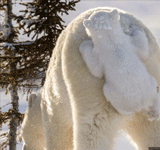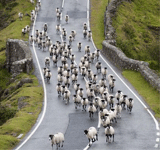| Chinese New Year Activities | |||||||||||
|
|||||||||||
//english.dbw.cn 2016-02-08 18:15:41 |
|||||||||||
Chinese New Year EveNew Year CleaningOn the days before the New Year, Chinese families give their houses a thorough cleaning. But traditionally, this practice is done on New Year Eve. The dust and dirt are traditionally associated with "old" in Chinese culture, so cleaning the houses and sweeping the dust mean to bid farewell to the past new and usher in the new year. New Year Even FeastThe New Year's Feast is "a must" banquet with all the family members getting together. People from north and south have different sayings about the food they eat on this special day. Southern Chinese eat "niangao" (New Year cake made of glutinous rice flour) on this special day, because a homophone of "Niangao", means "higher and higher every year". In northern China, a traditional dish for the feast is "Jiaozi" or dumplings which are shaped like a crescent moon. Read more on Chinese New Year Food. Watching CCTV New Year GalaThe annual CCTV New Year Gala begins at 8:00 and lasts for 4 hours to the beginning of the New Year. Shousui-Staying up lateShousui means to stay up late or all night on New Year's Eve. After the New Year's Feast, families sit together and watch CCTV New Year Gala to wait for the New Year's arrival. Waiting for the First Bell Ringing of Chinese New YearThe first rising bell is a symbol of Chinese New Year. Chinese people like to go to large squares where there are huge bells set up on New Year's Eve. As the New Year approaches they count down and celebrate together. People believe that the ringing of huge bell can drive all the bad luck away and bring fortune to them. In recent years, some people have begun going to mountain temples to wait for the first ringing of a bell. Hanshan Temple in Suzhou in East China's Jiangsu Province, is very famous for its first ringing of the bell to herald Chinese New Year. Waiting for the First Bell Ringing is now beginning to be adopted by the ex-pat community here, which is evidenced by the number of foreigners going to Hanshan Temple to celebrate Chinese New Year. House DecorationsDays before the New Year festival, department stores, official buildings, office buildings and streets will be decorated with red lanterns and red couplets. Decorations for private houses are usually done on New Year's Eve. People will paste red couplets and door gods on doors, hold red lanterns in their houses. The reason why red color is frequently used for New Year decorations is that it is associated with good fortune and happiness in Chinese culture. In North China, it is customary to paste paper-cut on windows while in South China, such as Guangzhou and Hong Kong, certain flowers and plants are used. Read more on Chinese New Year decorations. The First Day
Lighting Firecrackers used to be one of the most important customs in the Chinese New Year celebration. But because of the danger and the noise disturbance that firecrackers may bring the government has banned this practice in many major cities such as Beijing, Guangzhou and Shanghai. However, people in small towns and rural areas still hold to this traditional celebration. Just as the clock strikes 12 o'clock, beginning a new year on the Chinese lunar calendar, cities and towns are lit up with the sparkle of fireworks and the sound can be deafening. Families stay up for this joyful moment and kids with firecrackers in one hand and a lighter in another cheerfully celebrate by throwing the small explosives one by one into the street, whilst plugging their ears. See New Year events in Beijing, Shanghai, Guangzhou and Hong Kong. Parents or Elders Give "Lucky Money" to Their Children"Lucky money" is the money given to kids from their parents, grandparents and bosses to their employees as a New Year gift. The money is believed to bring good luck and ward off evil spirits, hence the name "lucky money". Parents and grandparents first put the money in small, especially-made red envelopes and give the red envelopes to their kids in the first day of the New Year. They choose to put the money in red envelopes because Chinese people think red is a lucky color. They wish the lucky color will bring their children good luck in the coming year. This activity is often the kids' favorite. Greeting to Each OtherOn the first day of the New Year, everybody wears new clothes and greets relatives and friends with bows and Gongxi (congratulations), wishing each other good luck, happiness during the new year. In the first day of the New Year, it's customary for the younger generations to visit the elders, wishing them healthy and longevity. See Chinese New Year greetings. A new way of new year greeting has appeared in large cities in recent years. Busy people who do not have time to pay a visit to their friends' house will opt to send New Year Card and text massage to their friends or relatives. See Chinese New Year Cards . The Second DayTraditionally, the second day of Chinese New Year is for married daughter to visit the house of her parents. The Third to the Seventh DayFrom the third day to the seventh day, people go out to visit relatives and friends. The Eight DayThe eight day is the end of the official New Year Holiday and people will go to work on this day. All of government agencies and business will stop celebrating on the eighth day. The Fifteenth DayThe fifteenth Day of the New Year is the Yuanxiao (Lantern Festival), which marks the end of the Spring Festival celebrations. |
|||||||||||
| Author: Source:xinhua Editor:Yang Fan |
|||||||||||
 中文简体
中文简体












